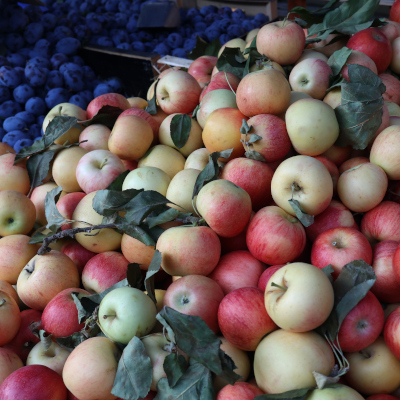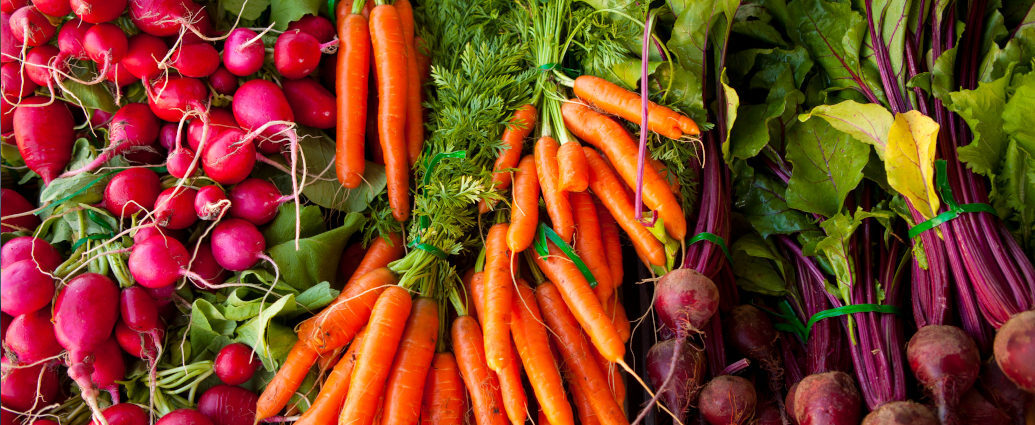The Ecosystem of Small Farms– too important to fail
Small farmers are vital to our food system, yet they face numerous challenges that threaten their livelihoods and the stability of food production. The “ecosystem” of farming is complex–and the loss of markets, increasing consolidation, and climate change create a complex web of issues that demand attention. This may sound like a problem you don’t have because you are not a farmer, but dive a little deeper. Small farms are experiencing stress in profound ways. That affects the local rural economy, the sustainability of rural communities to provide local services and maintain expected community services such as hospitals, schools, groceries, and Main street businesses, or even attract residents to contribute to the community.
A very good example of what happens when an area loses their small farm community is the Kickapoo Valley Dam Project, initiated decades ago. What is now the Kickapoo Reserve in nearby La Farge, WI., (also home to organic cooperative powerhouse, CROP and Organic Valley.) The reality of losing small farms is not just sadness for the loss of a “way of life”, the reality is that the intersection of policy that favors larger operations and does not boost smaller ones, also means a threat to all of rural America–no matter your age, your economic level, or your neighbors way of life.
Back to the Kickapoo Dam Project. The original plan was to buy out small farms, and flood the valley for recreation and tourism enterprises, presumably to provide an economic boost to the area. The result of removing roughly 100 small farms–and the eventual pull back on the dam plans, resulted not in the expected ripple effect of tourism, but rather an accelerated decline of small town life, and economic shrinkage of area small towns for decades afterwards throughout the valley.
Other, more positive, interventions happened long ago as well–the creation of the robust apple production industry in the Gays Mills, WI area in the early 1900’s. A marker on the Apple Ridge states,
“Farmers in this area learned  early that the land on both sides of the Kickapoo River offered excellent conditions for apple-growing. In 1905 John Hays and Ben Twining collected apples from eight or ten farmers around Gays Mills for exhibit at the State Fair. The exhibit won first prize, then went on to capture first honors in a national apple-show in New York. This experience prompted the Wisconsin State Horticultural Society to urge a project of ‘trial orchards’ around the state to interest growers in commercial production. The Society examined a site on High Ridge and planted five acres with five recommended varieties. By 1911 the orchard had grown so vigorously that an organization was formed in Gays Mills to promote the selling of orchards. Today more than a thousand acres here produce apples nationally known for their color and flavor. Erected 1955″
early that the land on both sides of the Kickapoo River offered excellent conditions for apple-growing. In 1905 John Hays and Ben Twining collected apples from eight or ten farmers around Gays Mills for exhibit at the State Fair. The exhibit won first prize, then went on to capture first honors in a national apple-show in New York. This experience prompted the Wisconsin State Horticultural Society to urge a project of ‘trial orchards’ around the state to interest growers in commercial production. The Society examined a site on High Ridge and planted five acres with five recommended varieties. By 1911 the orchard had grown so vigorously that an organization was formed in Gays Mills to promote the selling of orchards. Today more than a thousand acres here produce apples nationally known for their color and flavor. Erected 1955″
That market was created by the “urging of the WI State Horticultural Society” and the motivation of locals to promote the selling of orchards. A good example of public/private/community policy in action. Those efforts early on have resulted in robust growth of a segment of the farming industry. Sometimes, small farmers just need a boost, and favorable policies that support their strengths to the benefit of the community.
Challenges ahead for markets
Major challenges include the loss of markets, which is accelerating as this is written. Coupled with loss of farm workers, often on work visas, but feeling the pressure and fear of ICE, also cripple the ability to plan well, and do well, for all involved. The ecosystem of farming is at risk.
Global events and crises can disrupt supply chains, leaving small farmers vulnerable. For instance, the COVID-19 pandemic led to significant disruptions, with farmers markets closing and restaurants reducing orders. This left many small farmers with surplus produce and no viable outlets to sell. The concern now is labor to work the farm, and production harvested, with the possibility of no markets overseas for some for the foreseeable future.
Climate Change Impacts
Climate change poses significant risks to agriculture, particularly for small farmers who often have limited resources to adapt. Extreme weather events, changing weather patterns, and increased pests and diseases can lead to crop failures and economic hardship. Ironically, the more diversified smaller farmer is actually better poised to weather and adapt–with a bit of support . Diversification of planting also helps with pollination, pest control, reduction of chemical inputs, and soil and water management–a basic need in farming regardless of size of the operation.
 Shifts in temperature and precipitation patterns can affect crop yields and suitability. Farmers may need to adapt their planting schedules, crop choices, and farming practices, which can be costly and challenging. Adaptation is based on knowledge–the research and knowledge sharing that comes from UW Extension (the Wisconsin Idea), experience passed on to the next generation (which is a on the job training and affordability issue for young farmers), and the evolving tech; more accessible than ever to smaller operations to calculate risks and predict weather patterns, such as with the NOAA service, which has been recently de-funded. Forecasting markets, and maintaining long term relationships with buyers overseas that had been carefully cultivated over years is currently at risk. An isolated US market inhibits adaptation, success, and sustainable farming.
Shifts in temperature and precipitation patterns can affect crop yields and suitability. Farmers may need to adapt their planting schedules, crop choices, and farming practices, which can be costly and challenging. Adaptation is based on knowledge–the research and knowledge sharing that comes from UW Extension (the Wisconsin Idea), experience passed on to the next generation (which is a on the job training and affordability issue for young farmers), and the evolving tech; more accessible than ever to smaller operations to calculate risks and predict weather patterns, such as with the NOAA service, which has been recently de-funded. Forecasting markets, and maintaining long term relationships with buyers overseas that had been carefully cultivated over years is currently at risk. An isolated US market inhibits adaptation, success, and sustainable farming.
Flood mitigation, pests, water quality and soils
Warmer temperatures and altered rainfall patterns can create conditions favorable for pests and diseases. Small farmers with fewer resources for pest management may suffer significant losses. Flood mitigation strategies are critical as well in our increasingly stormy world–and much can be done by individual farmers when it comes to soil and water quality that is critical for a healthy food system, supplying nutritious food, and regional access to that food.
Addressing these challenges requires a multi-faceted approach involving policy changes, market interventions, and community support.
Government policies play a crucial role in supporting small farmers. Why? Our entire society is based on this ecosystem. And yes, our government has forever picked winners, and keeping small farmers farming is well worth the small investment needed. For instance:
- Subsidies and Financial Assistance: Providing direct financial assistance to small farmers can help them weather economic downturns and invest in sustainable practices.
- Market Regulations: Implementing regulations to promote fair competition and prevent monopolies can ensure a level playing field.
- Land Use Policies: Protecting farmland from development and ensuring access to land for new farmers is essential.
Creating alternative markets and strengthening local food systems can benefit small farmers. This includes:
- Farmers Markets and Direct Sales: Supporting farmers markets and other direct-to-consumer outlets can provide farmers with more control over pricing and distribution.
- Community Supported Agriculture (CSA): Encouraging CSAs can create a stable market for farmers and provide consumers with fresh, local produce.
- Local Food Procurement: Institutions, such as schools and hospitals, can prioritize sourcing food from local farmers. Programs such as SNAP supply food feed to our own children, and that production is sold by the farmer to the SNAP program. Sending emergency food supplies overseas helps farmers, and helps the USA stabilize ravaged countries, tamping down extremism. This food is not donated, it is sold by the farmer.
Consumer awareness and community support are vital. Educating consumers about the importance of local food and the challenges faced by small farmers can drive demand. This includes:
- Buy Local Campaigns: Promoting “buy local” initiatives can encourage consumers to support local farmers.
- Supporting Farm-to-Table Restaurants: Patronizing restaurants that source from local farms can create a vital market for small producers.
- Volunteering and Community Involvement: Participating in farm activities and supporting agricultural organizations can strengthen the local food system. A good one is the Farmer’s Union.
The challenges faced by small farmers are interconnected and demand comprehensive solutions. Protecting small farmers and strengthening local food systems is not just about preserving a way of life; it is about ensuring food security, adequate nutrition, biodiverse strategies that support pollinators, promoting sustainable agriculture, and building resilient communities. By addressing these challenges through policy changes, market interventions, and community support, we can create a more equitable and sustainable food system.
–Julia Henley


